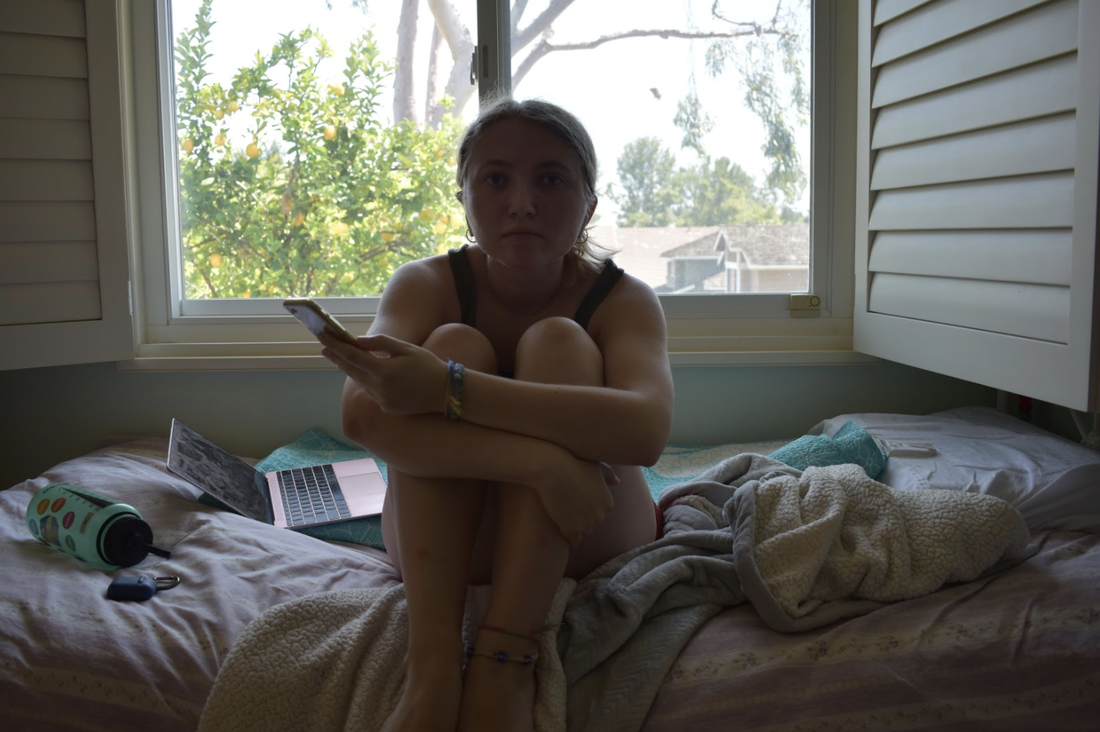|
by Katherine Schloss For me, 2020 has been an exploration of interiors. Of my mind, but also of the house that I lived in growing up. An analysis of what exists where and why. And how, returning “home,” you’ll find that the spaces you once knew so well have changed and rearranged without you.
Moving away for college, the interiors that I existed in morphed and shifted in so many ways. First a dingy dorm room with spaces that would never quite feel like mine. Then, an apartment where I manipulated my belongings into arrangements that fit a new room, with a new view and cream colored walls that I could cover with a collage of my existence. I fantasized about owning another place, a haven within a big city with furniture and pieces that I’d gathered over time, creating a physical representation of the chaos within me. Recently, I’ve been revisiting spaces where I slowly mapped out my own intellectual interior, remembering things about myself that developed in the four walls of my childhood bedroom. Memories of long nights spent studying and contemplating are contained within the architecture. How strange that we’ve become so tied to these insides, these places of safety amidst a world that increasingly offers up dangers at every turn, when not long ago life was about getting OUT. I walk these hardwood floors trying to feel grounded, traveling the carpeted stairs again and again with each rotation of the earth, with the delineation of time based on each new news app notification on my phone. This fall, the art curatorial committee has created “Five Tables of Floor Plan,”delving into how artists depict humans within these physical floor plans, and how these spaces and bodies and cultural factors play off of one another. I challenge you to see how these pieces reach across time and space to reflect the ever-changing significance that interiors hold. The first piece that I focused on was Interior perspective of kitchen (House of the Century scrapbook), created by Ant Farm. I found this piece to be particularly fascinating, not only because it introduces conceptualizations of utopian living spaces but also because Ant Farm was a collective that was founded to explore alternative art in its many forms. How can we reimagine living spaces, in their design as well as their function? How does each space we enter inherently contain meanings, both for the people living in it as well as larger social implications? I wonder to what extent the floor plans of this 1970s House of the Century- which as of late is in a state of decay- can be compared to modern architecture today. It’s interesting to see a building and its interior spatial arrangements as a vision for the future or an indicator of the ways in which we exist in these spaces can change over time. The second piece that I researched was Tetsuya Noda’s Diary: August 22, 1968. I’m currently in a Japanese History class, and have always been obsessed with woodblock prints, but I was drawn to this piece immediately because it’s so different from traditional Japanese woodcuts. Noda has amassed a great visual chronicle of his intimate life as well as the more public happenings that he has been witness to. This specific piece focuses on a family and its existence in a space, however my inclination when viewing it is to notice how people can be arranged in their own sort of floor plan. This picture can be seen as representing a sort of family hierarchy, with the oldest members having the privilege of gaining a seat on the couch, as well as a separation by traditional conceptions of gender for the younger generations. I’m intrigued by the way Noda’s color palette creates a meshing of their bodies, the background, and the objects which have been placed center stage, suggesting that their bodies are inextricably linked to the landscape of the photo. They become a unit in their arrangement, situated below the great expanse of white space hovering above their heads. As you delve into the BAMPFA student committee’s recent iteration of “Five Tables,” look around yourself and think of the ways that you have shaped the interiors of your life and the spaces around you. How does your personality manifest itself on the walls? And how has being inside for quarantine changed the meaning of the floor plans that you know so well?
0 Comments
Leave a Reply. |
Archives
March 2024
Writers
All
|
